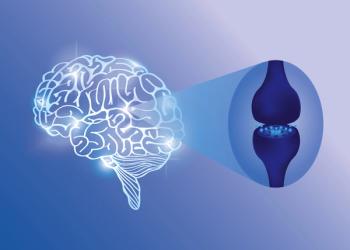
- Psychiatric Times Vol 28 No 3
- Volume 28
- Issue 3
Diagnosing Fibromyalgia: Development of New Criteria
The most important question is whether the new diagnostic criteria are an improvement. . . . I am highly skeptical that they are.
Twenty years ago, the American College of Rheumatology (ACR) introduced the following clinical criteria for the diagnosis of fibromyalgia (FM)1:
• A history of widespread pain, defined as pain present on both the left and right sides of the body and above and below the waist
• Pain on palpation in at least 11 of 18 defined points throughout the body (the points must actually be painful and not merely tender to palpation)
Even when these criteria were introduced, there was concern about how useful they would be in clinical practice. At that time, the developers of the ACR criteria noted that “the symptoms of FM are potentially ‘soft,’ and may be subject to examination interpretation.”1(p170)
Although I have always shared these concerns, I have felt the criteria, when employed correctly, are useful for differentiating FM from other forms of diffuse pain. However, on the basis of my experience, in very few patients was the diagnosis of FM made using these criteria. Unfortunately, FM-which I definitely believe is an actual and distinct disorder-has become something of a wastebasket diagnosis for patients with diffuse pain for which no detectable underlying physical pathology exists.
Recently, the ACR proposed a new provisional alternative set of diagnostic criteria for FM.2 The reasons for the development of these alternative criteria, as described by the ACR panel, include:
• The infrequency with which primary care physicians (PCPs) perform pain point examinations
• When these examinations are performed, they are often done incorrectly
• The importance of other symptoms, such as fatigue, are not included in the diagnostic criteria
• The inability to use the criteria for patients with reduced pain points as a result of treatment
For the new criteria, the ACR panel used an existing index of pain extent-the widespread pain index (WPI). The panel also developed a new scale, the FM symptom severity scale (SS). Using these tools, patients with FM were compared with a control group of patients with noninflammatory painful disorders, such as degenerative neck and back pain, osteoarthritis, and tendinitis. Scores on these 2 instruments would be used to diagnose FM.
While developing the new criteria, patients with FM were compared with those in whom FM had previously been diagnosed and with controls. Not surprisingly, the pain point count was the clearest distinction. Current FM patients had 15.9 ± 2.3 such points compared with 7.9 ± 4.1 for the group with previously diagnosed FM and 2.5 ± 3.0 for the control group. The second most important differentiating point among the groups was the degree to which the current FM patients reported unrefreshed sleep, which was found to be more severe than in the other 2 groups.
On the WPI, patients were asked to identify in which of 19 body areas they had pain during the previous week. For development of the SS, patients completed 7 scales of various symptoms, with scores ranging from 0 (no problem) to 3 (severe, pervasive, continuous, and/or life-disturbing problems). Patients were asked about severity of pain, fatigue, problems with sleep, and waking up feeling unrefreshed over the previous week. They were also asked about the presence during the previous 3 months of a wide range of somatic symptoms, including dry mouth, headache, dizziness, shortness of breath, anxiety and depression, and difficulty in concentrating.
The variables that most strongly correlated with pain point count and the WPI score were somatic symptoms, fatigue, waking up feeling unrefreshed, cognitive problems, and mood. Curiously, while the first 4 were included in the SS, mood was excluded. Despite their acknowledgment of the apparent importance of mood, the panel stated: “We chose not to include mood because we judged mood difficult to assess and because it might be a resultant feature rather than a primary feature of the illness.”2(p608)
I consider this to be one of the more disingenuous statements I have read in a scientific journal. To a great degree, PCPs are the primary screeners for mood disorders. Furthermore, judging by the number of antidepressants PCPs prescribe, they provide treatment for many patients with mood disorders. These disorders may be “difficult to assess” at times, but I think most PCPs would be both amazed and insulted to be informed that they are unable to perform such assessments.
Whether the mood disorder is primary or secondary is an issue clinicians face for many illnesses-not just FM. Also, we have known for 35 years that by disturbing normal sleep cycles in healthy volunteers, symptoms of FM can be induced.3 Yet the ACR panel does not appear to have been concerned about this.
One can only speculate whether by excluding mood from the criteria, the authors of the guidelines sought to avoid controversy about the relationship between mental disorders and FM. Unfortunately, many patients still believe that if pain is associated with a mental disorder, it means that the doctor doubts whether the pain is actually present.
Of course, the most important question is whether the new diagnostic criteria are an improvement over the 1990 criteria. I am highly skeptical that they are. The ACR panel notes that the SS can be used in addition to the pain point examination to establish baseline severity of symptoms. Despite the exclusion of mood from the SS, the new criteria do provide additional useful information, and I certainly would consider using them. However, considering the time constraints most PCPs face, I doubt that many of them will take the additional time to have a patient complete the SS or to use the WPI in place of the pain point examination.
These instruments would be used only after the history and physical examination were completed, and also, in many cases, after laboratory tests and a radiological examination ruled out other disorders. Only then is it likely that FM would be considered a diagnostic possibility. Unless a PCP frequently sees patients with FM, he or she would probably not even bother to keep the SS and the WPI readily available. The ACR panel states that a major limitation of the new criteria is that although they were developed with the PCP in mind, there has not yet been a clinical trial of them with PCPs.
There is one additional question about the new criteria . . . the continuing involvement of the ACR in developing diagnostic criteria for FM. When the 1990 criteria were developed, FM was still widely considered a rheumatological disorder. However, more recent research indicates that it is much more likely to be a disorder involving the CNS, with changes in central processing of pain and in neurotransmitters. Perhaps professional organizations such as the American Academy of Neurology or even the American Psychiatric Association would be more appropriate for developing future guidelines.
References:
References
1. Wolfe F, Smythe HA, Yunus MB, et al. The American College of Rheumatology 1990 Criteria for the Classification of Fibromyalgia. Report of the Multicenter Criteria Committee. Arthritis Rheum. 1990;33:160-172.
2. Wolfe F, Clauw DJ, Fitzcharles MA, et al. The American College of Rheumatology preliminary diagnostic criteria for fibromyalgia and measurement of symptom severity. Arthritis Care Res (Hoboken). 2010;62:600-610.
3. Moldofsky H, Scarisbrick P, England R, Smythe H. Musculoskeletal symptoms and non-REM sleep disturbances in patients with “fibrositis syndrome” and healthy subjects. Psychosom Med. 1975;37:341-351.
Articles in this issue
over 14 years ago
We’ve Got Issues: Children and Parents in the Age of Medicationover 14 years ago
Crittersover 14 years ago
Unlucky Number 90862over 14 years ago
The “Bar-Coding” of Patients With Electronic Health Recordsover 14 years ago
Demystifying Health Reform Legislationover 14 years ago
Mixed States in Their Manifold Forms: Part 1Newsletter
Receive trusted psychiatric news, expert analysis, and clinical insights — subscribe today to support your practice and your patients.




